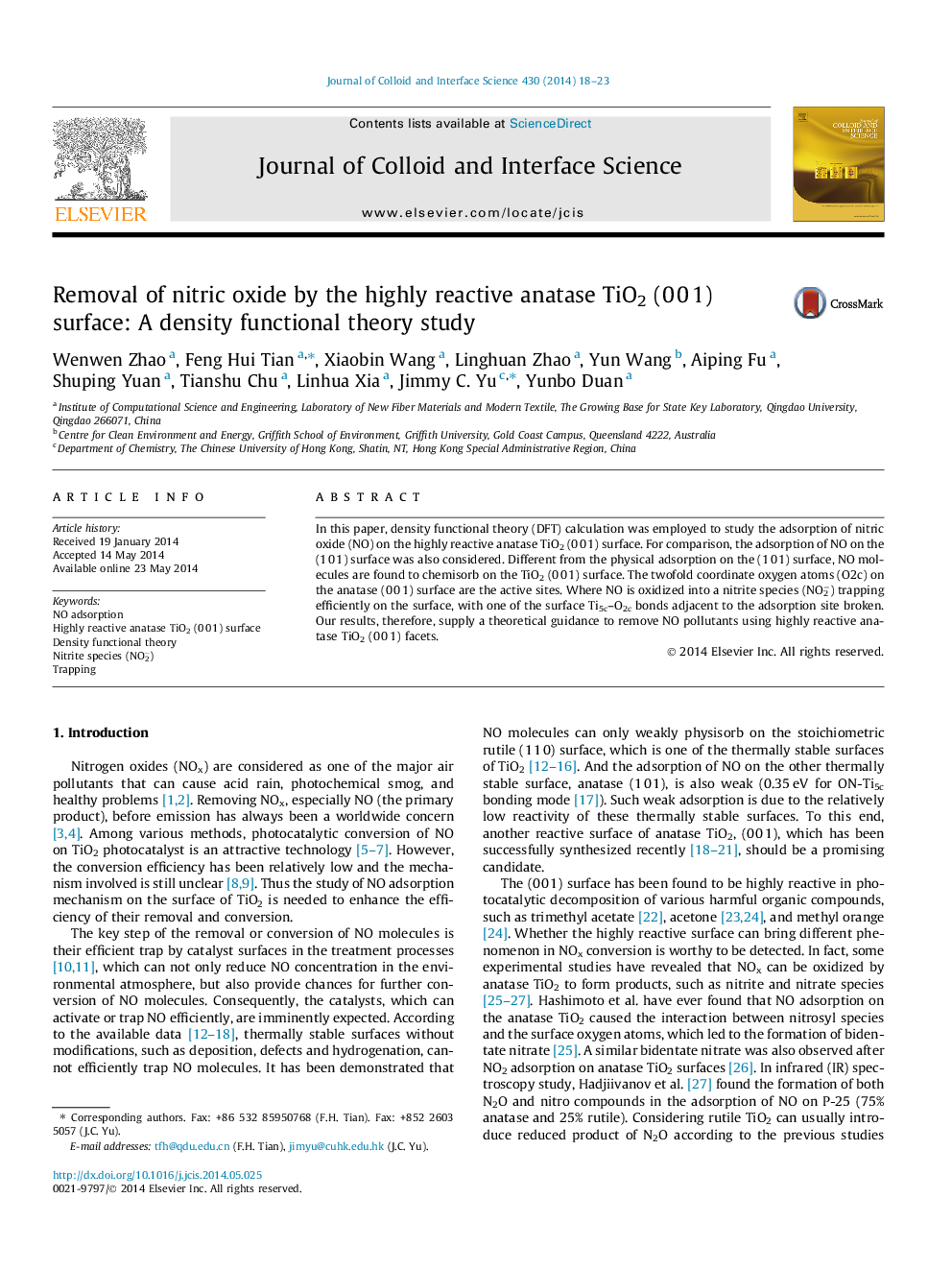| Article ID | Journal | Published Year | Pages | File Type |
|---|---|---|---|---|
| 607178 | Journal of Colloid and Interface Science | 2014 | 6 Pages |
•Anatase TiO2 (0 0 1) surface can oxidize NO into nitrite (NO2−) species.•The NO2− species is trapped efficiently on anatase TiO2 (0 0 1) surface.•The activated and trapped state provides chances for further conversion of NOx.
In this paper, density functional theory (DFT) calculation was employed to study the adsorption of nitric oxide (NO) on the highly reactive anatase TiO2 (0 0 1) surface. For comparison, the adsorption of NO on the (1 0 1) surface was also considered. Different from the physical adsorption on the (1 0 1) surface, NO molecules are found to chemisorb on the TiO2 (0 0 1) surface. The twofold coordinate oxygen atoms (O2c) on the anatase (0 0 1) surface are the active sites. Where NO is oxidized into a nitrite species (NO2−) trapping efficiently on the surface, with one of the surface Ti5c–O2c bonds adjacent to the adsorption site broken. Our results, therefore, supply a theoretical guidance to remove NO pollutants using highly reactive anatase TiO2 (0 0 1) facets.
Graphical abstractFigure optionsDownload full-size imageDownload high-quality image (65 K)Download as PowerPoint slide
